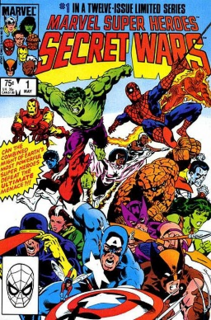Figures were 4 1⁄2 inches [115 mm] tall. They came packaged in a bubble-card pack. The back of the packaging card came with a character illustration and biography, a short 4-panel comic, and a depiction of available figures in the series.
They each came with a large plastic "Secret Shield" accessory that held a lenticular image. Heroes carried circular red shields and villains carried square gray shields, which were supposed to represent a sort of video communicator. The lenticular "secret identity" image was viewable through a clear plastic window in the top cover of the shield and shifted between showing either the character's costumed or secret identities. There was also a packet of four lenticular "secret message" cartoon inserts that came with each character that fit in the Secret Shield.
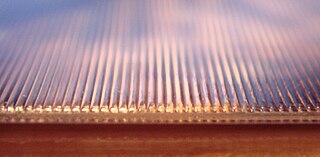
Lenticular printing is a technology in which lenticular lenses are used to produce printed images with an illusion of depth, or the ability to change or move as the image is viewed from different angles.
Series 1
The back of the packaging card had a character illustration and biography, a 4-panel comic of the character in action, and pictures of all eight Series 1 figures.
- Captain America - Captain America only came with a Secret Shield accessory rather than his iconic shield. His Secret Shield "secret identity" insert showed Capatin America's head shot over the same concentric red, white, and blue-circle-inset-with-a-white-star ring pattern.
- Doctor Doom - Comes with both a laser pistol and a laser rifle. The rifle fit in a socket in the back of the torso and the pistol could be attached to a green plastic holder on Doom's upper right leg.
- Doctor Octopus - Comes with Doc Ock's signature silver plastic tentacles. The tentacles were fragile and broke off easily, so an unpackaged figure with intact tentacles is rare.
- Iron Man (James "Rhodey" Rhodes) - Comes with a laser pistol weapon. The character piloting the Iron Man suit in the Secret Wars comic and the short biography on the back of the packaging was listed as James "Rhodey" Rhodes. However Iron Man's lenticular "secret identity" insert depicted Tony Stark instead.
- Kang the Conqueror - Comes with a laser pistol weapon.
- Magneto - Comes with a laser pistol weapon.
- Spider-Man (classic red-and-blue costume)
- Wolverine - Comes with clip-on silver plastic claws. The variant version had clip-on black plastic claws because of complaints that Wolverine's razor-sharp claws looked like knives.

Captain America is a fictional superhero appearing in American comic books published by Marvel Comics. Created by cartoonists Joe Simon and Jack Kirby, the character first appeared in Captain America Comics #1 from Timely Comics, a predecessor of Marvel Comics. Captain America was designed as a patriotic supersoldier who often fought the Axis powers of World War II and was Timely Comics' most popular character during the wartime period. The popularity of superheroes waned following the war and the Captain America comic book was discontinued in 1950, with a short-lived revival in 1953. Since Marvel Comics revived the character in 1964, Captain America has remained in publication.

A head shot or headshot is a modern portrait in which the focus is on the person. The term is applied usually for professional profile images on social media, the 'about us page' or a corporate website and promotional pictures of actors, models, and authors.

Doctor Victor Von Doom is a fictional character appearing in American comic books published by Marvel Comics. Created by writer-editor Stan Lee and artist/co-plotter Jack Kirby, the character made his debut in The Fantastic Four #5. The monarch of the fictional nation Latveria, Doom is usually depicted as the archenemy of Mister Fantastic and the Fantastic Four, though he has come into conflict with other superheroes as well, including Spider-Man, Captain America, Iron Man, Thor, Doctor Strange, Black Panther, the X-Men, and the Avengers.
Series 2
Poor sales of Series 1 cut back the North American release of this series to just five figures rather than eight. The remaining three were only released overseas. The back of the packaging card had the same character illustration, biography and 4-panel comic like the Series 1 figures but instead had pictures of Captain America, Doctor Doom, and Doctor Octopus from Series 1 and all five figures from Series 2.
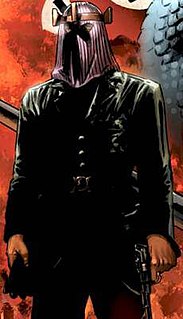
Baron Zemo is the name of several fictional supervillains appearing in American comic books published by Marvel Comics. The two central characters who have used the Baron Zemo title are Heinrich Zemo and Helmut Zemo. Both are major adversaries of Captain America and the Avengers and have led the Masters of Evil; the term also refers to a fictional barony that has spanned multiple decades of the fictional history of the Marvel Universe.

Daredevil is a fictional superhero appearing in American comic books published by Marvel Comics. Daredevil was created by writer-editor Stan Lee and artist Bill Everett, with an unspecified amount of input from Jack Kirby. The character first appeared in Daredevil #1. Writer/artist Frank Miller's influential tenure on the title in the early 1980s cemented the character as a popular and influential part of the Marvel Universe. Daredevil is commonly known by such epithets as the "Man Without Fear" and the "Devil of Hell's Kitchen".

Falcon is a fictional superhero appearing in American comic books published by Marvel Comics. The character was introduced by writer-editor Stan Lee and artist Gene Colan in Captain America #117, and was the first African-American superhero in mainstream comic books.
Foreign releases
These were originally planned to be part of Series 2 but were instead dumped in overseas markets. Packaging was in Spanish language text.
- Constrictor - Comes with a silver plastic constrictor cable (rather than two). It doesn't attach to the wrist like the villain's do in the comics but is held in the right hand.
- Electro
- Iceman - Made of opaque white plastic. Only the eyes and belt-buckle are detailed.
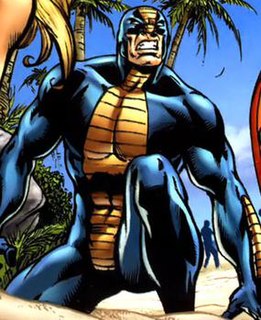
Constrictor is the name of two fictional characters appearing in American comic books published by Marvel Comics.

Electro is a fictional supervillain appearing in American comic books published by Marvel Comics. Maxwell "Max" Dillon, the first Electro, is an enemy of Spider-Man who gained the ability to control electricity after being struck by lightning while working on a power line. Electro has since become one of Spider-Man's most enduring foes, becoming part of the collective rogue team known as the Sinister Six. The second Electro is Francine Frye.
2 and 3 Packs
- Captain America vs Doctor Doom - Came with both Series 1 figures and their accessories in a bubble-card pack. Only has Captain America's bio information on the back of the card.
- Super Heroes 3-pack - Came with Series 1 heroes Captain America, Spider-Man, and Iron Man in a bubble-card pack.
- Super Villains 3-pack - Came with Series 1 villains Dr. Doom, Magneto, and Kang in a bubble-card pack.
- Hero Gift Set - Came with heroes Daredevil, Spider-Man (black costume), and Captain America in a large window box. The back of the box has biographical information on all three characters and pictures of the Freedom Fighter Base playset, the Captain America and Doctor Doom figures from Series 1, the Falcon and Hobgoblin figures from Series 2, and all three foreign release figures. Might have been a move to sell off less prominent Series 2 hero figures by bundling them with a more popular Series 1 hero figure.
- Hobgoblin & Baron Zemo - Contains both Series 2 villains. Came in a tan corrugated cardboard mailer box with a direct-printed black-text label and contents were packed in sealed plastic baggies. Might have been a direct Mattel mail-in or special offer exclusive, as it doesn't resemble the Sears boxes.
Sears Boxed 2 Packs
Available through Sears' 1984 Wish Book Catalog. Came in white pasteboard mailer boxes with direct-printed black-text labels. Contents were packed in sealed plastic baggies.
- Wolverine vs Kang(Mattel #9051)
- Spider-Man vs Dr. Octopus(Mattel #9052)
- Iron Man vs Magneto(Mattel #9152)

An action figure is a poseable character doll made most commonly of plastic, and often based upon characters from a film, comic book, military, video game, or television program—fictional or historical. These figures are usually marketed toward boys and adult collectors. The term was coined by Hasbro in 1964 to market G.I. Joe to boys.
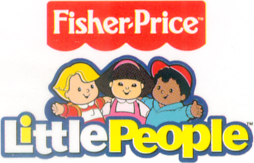
Little People is a toy brand for children ages 6–36 months and to ages 3 and up, originally produced by Fisher-Price, Inc. in the 1960s as the Play Family People. The current product line consists of playsets, mini-sets and accessories, books, CDs, and DVDs focusing on various configurations of 5 characters named Eddie, Tessa, Mia, Koby, and Sofie. Mattel reports that since the brand's launch, over 2-billion Little People figures have been sold in over 60 countries. In 2016, Little People was inducted into the National Toy Hall of Fame.
The Mego Corporation was a toy company that was originally founded in 1954. Originally known as a purveyor of dime store toys, in 1971 the company shifted direction and became famous for producing licensed action dolls, celebrity dolls, and the Micronauts toy line. For a time in the 1970s, their line of 8-inch-scale dolls with interchangeable bodies became the industry standard.

Masters of the Universe is a media franchise created by Mattel. The main premise revolves around the conflict between the heroic He-Man, against the evil sorcerer Skeletor on the planet Eternia, with a vast lineup of supporting characters in a hybrid setting of medieval sword and sorcery and sci-fi technology. A spin-off series with a similar premise, She-Ra, Princess of Power, features He-Man's sister, She-Ra, and her struggle against the Evil Horde on the planet Etheria. Since its initial launch, the franchise has spawned a variety of products, including multiple lines of action figures, five animated television series, several comic series, video games, a daily newspaper comic strip, and two feature films.
Battle Beasts is a line of small 2" tall action figure toys, in the form of an anthropomorphised animals with body armor and a unique weapon. Several figures have their left hand replaced by a weapon of some kind. Battle Beasts were created and largely produced by Takara and distributed by Takara in Japan and by Hasbro outside Japan, beginning in 1987.

Big Jim was a popular line of action figure toys produced from 1972 through 1986 by Mattel for the North American and European markets. He was renamed Kid Acero in Latin America and, for a short period of time, Mark Strong in Europe. Originally inspired by G.I. Joe, the Big Jim line was smaller in size and each figure included a push button in the back that made the character execute a karate chop action. The action figure's arms were made of a soft plastic/vinyl material and contained a mechanism that simulated the bulge of a biceps when the elbow was bent. Big Jim was less military-oriented than the G.I. Joe line, having more of a secret agent motif, but also had a large variety of outfits and situations available including sports, space exploration, martial arts, hunting, western, camping, fishing, and photography.
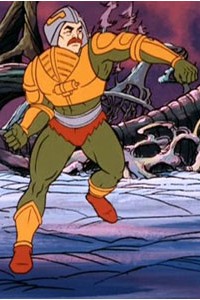
Man-At-Arms is a fictional character in the Masters of the Universe franchise. The figure's tag-line is "Heroic Master of Weapons".

The Super Powers Collection was a line of action figures based on DC Comics superheroes and supervillains that was created by Kenner Products in the 1980s.
Batman action figures have been produced since the 1940s.
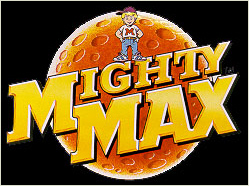
Mighty Max was a series of toys that were manufactured by Bluebird Toys PLC in the UK in 1992. The toys were similar to the earlier Polly Pocket toyline; however, these toys were marketed primarily towards young boys. In Canada and the USA, they were distributed by Irwin Toy Limited and Mattel Inc. respectively. The original toyline consisted mainly of "Doom Zones" and "Horror Heads." "Doom Zones" were small playsets with a horror theme and featured miniature figurines of menacing creatures and the hero Max, a young boy with blond hair, jeans, a white t-shirt with a red "M" on it, and a baseball cap which also always had an "M" on it. The "Horror Heads" were smaller-sized playsets, also shaped like the heads of creatures and contained miniature figures. It was later adapted into a TV series, as well as a tie-in video game The Adventures of Mighty Max produced by Ocean Software for the Super NES and Mega Drive/Genesis.
Power Lords - The Extra-Terrestrial Warriors is a science fiction themed action figure line produced by Revell in 1983. Revell hired Wayne Barlowe to design the toys.
DC Universe Classics was an action figure toyline, a sub-line of the DC Universe toy brand manufactured by Mattel. They were 6-inch scale figures based on characters owned by DC Comics. The entire line was sculpted by the Four Horsemen Studios, and were first available for sale in 2008. The "DC Classics" line ceased to be sold at retail in 2012 with wave 20. The series then became an online-and-convention exclusive line. It was announced in late 2014 that the line would come to an end with a final series of six figures celebrating the history of the line.
The WWF Hasbro Action Figure line was an action figure toyline based on the professional wrestlers of the WWF, produced by the toy company Hasbro from 1990 to 1994. The toys were made of plastic, with many featuring a signature action move based on their real life counterpart.
DC Universe: Justice League Unlimited Fan Collection is an action figure line based on the highly popular Justice League and Justice League Unlimited animated series. Though it was based on the show(s), the line has continued well beyond it, and has been re-branded in 2008, as a Target exclusive. Mattel announced in February 2011 that the line would come to an end later in the year with the final figures being released on the Mattel website including the final two three-packs, a seven-pack as well as the three exclusive Con three-packs being made available to the public.

DC Universe is a toy brand manufactured by Mattel. It has five sub-lines – Classics, Fighting Figures, Giants of Justice, Infinite Heroes, and the reintegrated Justice League Unlimited line.
Marvel Universe is a 33⁄4" action figure line manufactured by Hasbro, featuring characters from the Marvel Comics universe. It first hit stores in early 2009 and features detailed sculpting, multiple points of articulation, and accessories. The line was created by Hasbro Designer Dave Vonner.
This is a page listing the various transforming action figures, playsets, and the original storybooks in the Transformers: Rescue Bots franchise.

